Indian art is one of the most fascinating and diverse art forms in the world. The earliest form of Indian art was rock paintings, which were later followed by sculptures and other forms of art.
India has been home to some of the most important religions in the world such as Hinduism, Buddhism, Jainism, Sikhism and Islam. The country also has a rich literature tradition that dates back to at least 1000 BCE. The Vedas are among the earliest texts in this tradition.
India is a country with a rich and unique culture. The history of Indian art dates back to the Indus Valley Civilization and the subsequent Vedic period, which is around 1500 BCE. It has a rich history and a vast variety of styles, which make it an interesting subject for study.
The arts have played an important role in Indian culture for centuries. In fact, it can be argued that Indian art was so influential that it helped shape Western art and architecture styles for centuries to come.
India has a rich and diverse culture that is influenced by both the past and the present. The country is home to a variety of languages, religions, art forms, and architectural styles. It is often said that India has more than just one culture; it is a country with many cultures.
In this article, we will be exploring some of the most prominent aspects of Indian art, starting with its history and origin story.
Senthil Vel
Founder and Promoter
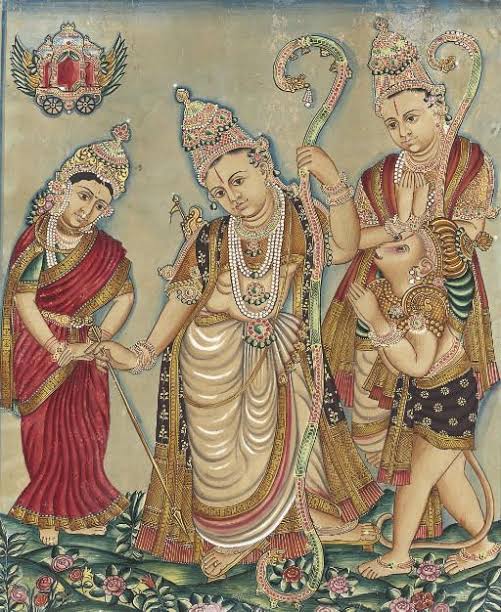
History of Indian Art
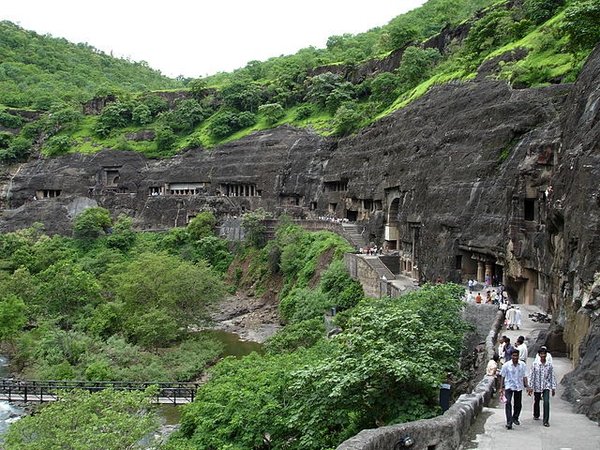
The history of Indian art is almost as old as its civilisation. Indian art is considered to have originated during the peak of the Indus Valley Civilization, somewhere around 2500 BC. Indian paintings during the time were often inspired by spirituality and sensuality, making it stand out in terms of content and aesthetics, an aspect that is appreciated even today.
However, with the changing times, wars, invasions and with the merger of different cultures and civilisations, Indian Art has changed drastically.
There are four different periods/events that can help you understand –
The evolution of Indian Paintings:
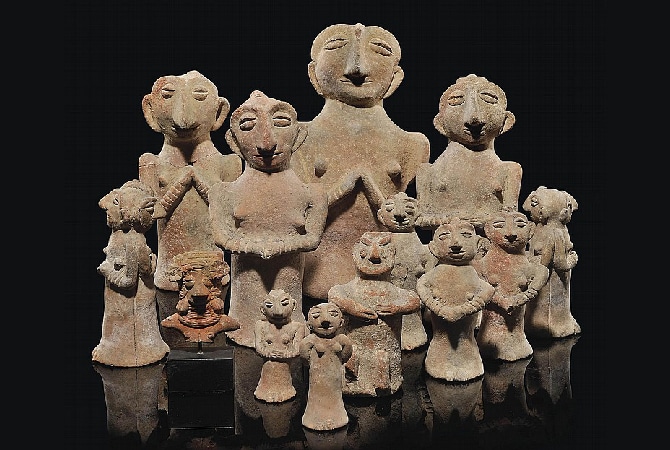
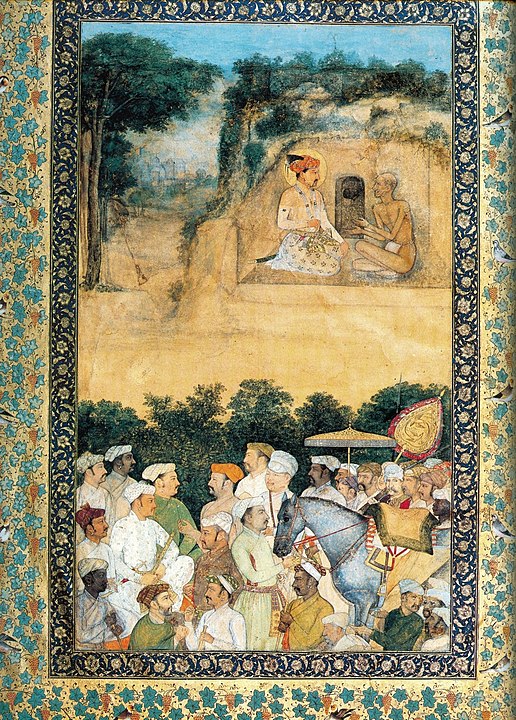
With the invasion of the Mughals and other Islamic rulers, came in the beautiful influence of Islamic culture. The Mughals who ruled India from the 16th century to the late 19 century especially left a lasting impression on India’s culture, clothing, food and Indian Paintings.
The Islamic influence was not only restricted to paintings and sculptures. Trace of their influence was seen in the architecture built during the period of sculpture in India.
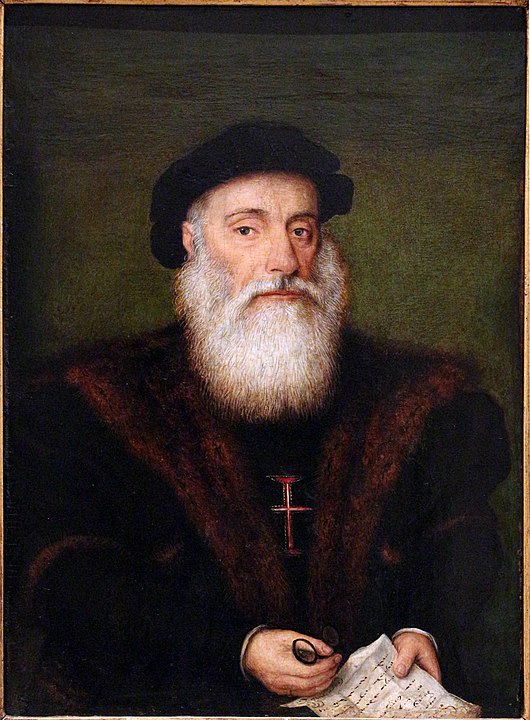
The arrival of Vasco da Gama was a defining moment when it comes to the western influence on Indian heritage. This period was highly influenced by western, mostly European influence. Be it the French, Portuguese, Denmark or England, the influence of the western world is something that can be experienced even today.

As modernization crept in, India had already fought and won its independence. This modern India had seen it all, be it the raging world wars, oppression, invasion, struggle, independence, evolution of cultures, etc. All these aspects have impacted the way we paint even today.

Each era is unique in its distinctive culture. In the same way Indian art forms have continuously evolved over thousands of years. In ancient India, various art forms like paintings, architecture and sculpture in India evolved.
The history of art in ancient India begins with prehistoric rock paintings. Such rock paintings can be seen in the Bhimbetka paintings, belonging to the prehistoric age.
Thereafter, an advanced town planning is seen in Harappa and Mohenjo-Daro, with their centrally planned cities indicating a highly developed architecture. Another remarkable example of sculpture in India from Harappan civilization comes in the form of the dancing girl from Mohenjo-Daro.

The use of symbolic forms in India is as old as the Harappan seals. The fire altars of the Vedic period, with their astronomical and mathematical significance also play an important role in the evolution of the later temples.
It was followed by a period in the history of Indian art that is important for rock-cut caves and temple architecture. The Buddhists initiated the rock-cut caves, Hindus and Jains started to imitate them at Badami, Aihole, Ellora, Salsette, Elephanta, Aurangabad and Mahabalipuram. The rock-cut art has continuously evolved, since the first rock cut caves, to suit different purposes, social and religious contexts, and regional differences.
Alongside the art forms like architecture, paintings and sculpture, there have been evolving, changing, transforming, folk and tribal art traditions in India.
These art forms are expression of people belonging to different cultural and social groups of India. It is the expression of people whose life is tuned to the rhythms of nature and its laws of cyclic change and whose life is knotted with natural energy.
It’s been a tradition in India that gods and legends are transformed into contemporary forms and familiar images. Fairs, festivals and local deities play a vital role in the development of these arts forms.
It is an art where life and creativity are inseparable. The tribal arts have a unique sensitivity, as the tribal people possess an intense awareness very different from the settled and urbanized people. Their minds are supple and intense with myth, legends, snippets from epic, multitudinous gods born out of dream and fantasy. Their art is an expression of their life and holds their passion and mystery.
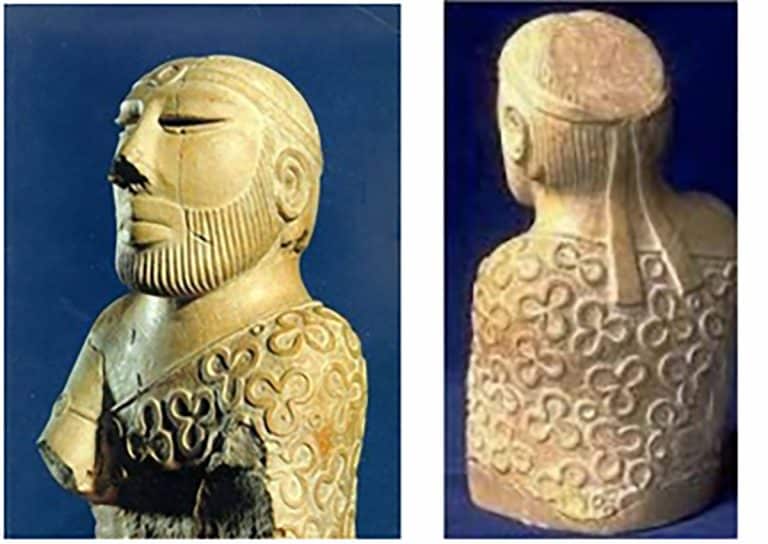
Early Indian Art is a vast repository of paintings, carvings, engravings, and sculptures dating from around 8000 B.C. up to the prosperous Gupta empire till 500 A.D. It can further be divided into prehistoric art, Indus Valley art, Mauryan art, Buddhist art, and Gupta art. The rock relief carvings of Bhimbetka and various other rock-painted shelters fall under the prehistoric category of Early Indian Art. The Indus Valley civilization too had a boom of artistic creations like metal sculptures and terracotta figurines. Buddhist art gained huge popularity with the widespread construction of Chaityas and Viharas adorned with paintings and relief sculptures. Though the golden age of Early Indian art came during the Gupta period, which is generally regarded as the peak – it saw paintings as well as elaborate and finely cut religious sculptures.
- Ancient
1.1 Prehistoric (8000 BCE)
Bhimbetka Cave Paintings
This UNESCO World Heritage Site is believed to be around 30,000 years old. They are situated in the foothills of Vindhyan Mountains in Raisen district of Madhya Pradesh. These were excavated by archaeologist V.S. Wakankar in the year 1957. Out of 760 shelters, only 500 are found to be painted ranging from Mesolithic to Medieval Periods.
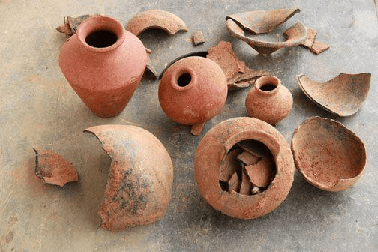
1.2 Bronze age and Indus Valley Civilization (5000 -1500 BCE)
Ochre Coloured Pottery
B.B.Lal founded a special type of ceramic that was used by people who inhabited the Doab region between Ganga and Yamuna in 1951-52. In the 1950s, OCP ware was found at village Rajpur Parsu in District Bijnor, U.P.
Pashupathinath seal
It is a steatite seal found in Mohenjo-Daro that dates back to 2300 B.C. it shows a three-headed figure that is identified as Shiva, the lord of the animals.
Steatite Statue of the Bearded Priest
The steatite bust of The Priest-King was found in the excavation of 1927 at Mohenjo-Daro. The figure is seen to be adorning a headband and an armband. The drape is floral and suggests that man belonged to an upper class. Whole in the ears implies that a necklace is missing that was initially there.
Black and Red Ware Pottery
This kind of pottery was found in the 1960s at Atranjikhera in the state of U.P. it is situated on the banks of Kali Nadi, a tributary to Ganga. It was excavated by R C Gaur in 1962.
1.3 Vedic Period and Iron Age (1500 BCE-600 BCE)
Painted Grey Ware
Among many other sites, Ahichchhatra that is located near Bareilly District of U.P. is the first that was reported to have PGW. People of this region lived in more sophisticated houses than their predecessors. The density of these wares was higher than OCP and BRW cultures.
Ajanta Cave Paintings (2nd century BCE – 7th century CE)
The work on this UNESCO World Heritage Site began under the patronage of the Satvahana Dynasty influenced by Hinayana Sect and extended to as late as the Vakataka Period influenced by Mahayana Sect. It is a plethora of 30 Buddhist rock-cut caves surrounding river Waghur, District Aurangabad in the state of Maharashtra.

1.4 Classical Period or Post-Vedic Period (600 BCE-10th century CE)
Sigiriya (5th Century CE)
The work Sigiriya is derivated from Si-hagri or claw of a lion. It is a plateau formed by the deposition of magma of an extinct volcano. The rock fortress, famous for its surviving 18 frescoes was developed in 5th century A.D. by King Kashyapa. It is situated between the Golden Cave Temple of Dambulla and Habarane. It is a UNESCO World Heritage Site in the year 1892.
Bagh Painting (6th Century – 7th Century CE)
The rock-cut cave lies 7 KM away from village Bagh meaning Tiger on the banks of river Baghini, Tehsil Kukshi, District Dhar, Madhya Pradesh. The group of 5 caves, initially 9, are the finest example of Buddhist art. The painting of Boddhisattva Padmapani here resembles one in Ajanta Caves. The discovery of this site is ascribed to an account by Captain F Dangerfield.
Badami Painting (6th Century CE)
Badami or Vatapi lies in the valley of river Malaprabha, District Bagalkot, Karnataka. It served as a capital of Chalukyas founded by Pulkeshin I in 543 A.D. after the decline of Vakataka. These Indian paintings were completed during the reign of King Mangalishwara. In the cluster of four caves, the first one relates to Lord Shiva, the next two caves to various incarnations of Lord Vishnu, and the last one to Adinatha or Rishabhnatha, the founder of Jainism.
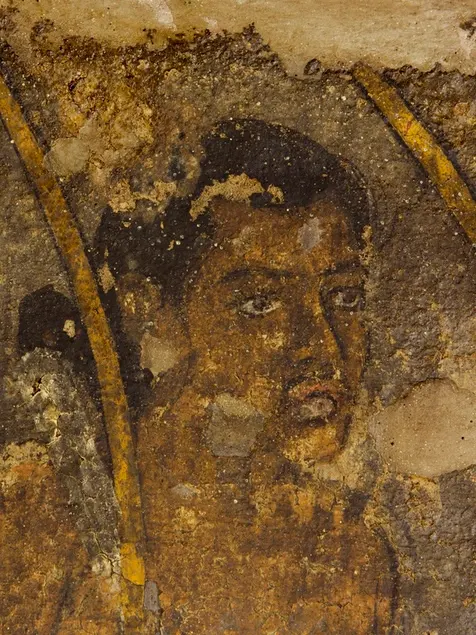
2.2 Late Medieval Period (12th century AD-16th century AD)
Vijayanagar Paintings (13th -15th century)
The Vijayanagar Empire was established by Harihara in the 13th century. It is famous for ceiling paintings of Shiva in the Virupaksha Temple, Hampi, Bellary district in Karnataka.
The sanctum sanctorum of Kalyana Sundareswaran Temple has beautiful paintings. It is located in Nallur Village in district Tiruvarur. Iconic paintings depicting Narada surfaced during a renovation which was conducted under the guidance of Kudvayil Balasubramanian. The Wall art at Lepakshi temple is also commendable Indian Artwork.
- Medieval (8th-century AD-16th century AD)
Medieval Art was commissioned and patronized as paintings – either on a grand scale on walls and as murals, or as Indian miniature and detailed paintings styles. Metal sculptures using bronze or copper were also common and widely made during this period. One of the main contributions was the grand temples built, which were an amalgamation of all art forms practiced during this time.
2.1 Early Medieval Period (8th-century AD-11th century AD)
Panamali and Sittanavasal Painting (8th Century – 9th Century CE)
Panamali paintings are housed in Talagirishwara Temple dedicated to Lord Shiva in the city of Panamali, Tamil Nadu. The temple was built under the patronage of Pallava ruler Narasimha Varman II (690-728 A.D.). Only a painting of Parvathi has survived.
Sittanavasal is located in district Pudukkottai in the state of Tamil Nadu. The cave served as monastery also known as Arivar Kovil. They show the earliest example of Jaina paintings that date back to the 2nd century.
These were made during the reign of Mahendravarman, a noted Pallava ruler. One of the most vivacious and vivid painting is that of 23rd Jain Tirthankara Parshavanath holding a lotus.
Ellora Painting (8th-9th centuries CE)
Only 5 caves amongst the 34 caves in Ellora have paintings. The artwork in Kailash Temple is finest of them all. However, the motifs of art belong to Hinduism, Jainism, and Buddhism.
The paintings are said to have been made in parts. Figurines of Lord Vishnu and his consort Laxmi was made in the first part while an exquisite masterpiece depicting the marriage of Lord Shiva is depicted.
Tanjore Painting (11th century CE)
Tanjore or Thanjavur form of Indian artwork/ painting is native to the city of Thanjavur in Tamil Nadu. After the decline of Pallavas, Cholas emerged to become sole suzerain in southern India.
They were contemporary of the Rashtrakutas of the Deccan. The paintings give the effect of a 3D structure because they are made by embellishing gold, silver, copper, and valuable gems.
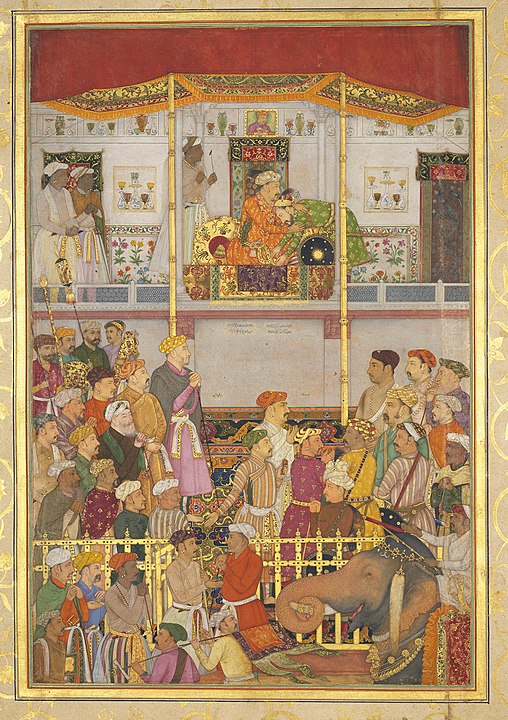
The art of the period of Mughals depicted the vibrancy and traditions of the time with artforms and painting styles such as Indian Miniature art with Persian, Pahari, Rajput, and other styles from various regions of the subcontinent. The painting was the preferred art form of the courts of Mughal and other rulers during this period.
Later during the Colonial rule, British influence and schools of thought had a major influence on styles of work produced and sought after.
Since British culture was taken to be the ideal way of life, other traditional and folk-art forms were simultaneously disregarded and Western influences over art and painting styles took precedence.
The Company Style of paintings was a popular style that originated due to the patronage of the East India Company during the 18th and 19th centuries. The style blended traditional Indian Art elements from Rajput and Mughal painting with a more Western style of perspective.
The Mughal Empire was established by Babur, the last of the Timurids in the later part of the 14th century. Humayun laid the foundation of Mughal paintings during his exile in Persia from where he befriended two eminent Persian artists, Mir Sayyid Ali and Abdus Samad, who also enjoyed the patronage of Akbar.
His biography Humanyunnama was illustrated with 1200 beautiful paintings. Many artists were hired from all parts of India. Abul Fazal identifies 15 painters like Daswant, Basawan, Kesav and Farrukh Beg amongst all to be the best.
Akbar commissioned paintings to be made portraying Persian tales like Tutinama and others i.e., Gulistan, Darab Nama, Khamsa of Nizami, Baharistan. He ordered to illustrate Humzanama. It is an account of the life of Amir Hamza. More than 1400 paintings were created to beautify the creation of this Indian Art.
As a result of European influence, the paintings that Jahangir commissioned were made with lighter colors with soft strokes. He is known to have an acute sense as that of a polished art critic. His autobiography ‘Jehangirnama’ was illustrated with many paintings. His court was attended by artists like Abul Hasan, Mansaur, Manohar, and Baswan.
Artwork produced during the reign of Shah Jahan was more realistic and sophisticated. Though he preferred paintings to be made in particular style only, the subject matter of them was bold i.e. he was interested in expressing the beauty of nature and didn’t shy away to commission the work that had intimate moments between lovers as their motif.
He ordered Padshahnama, the eulogies are written in praise of the mighty king, to be plated in gold in these ancient Indian paintings.
Aurangzeb was not much of an admirer of art. His political ambitions were way too high for that matter. Mughal paintings didn’t enjoy the support of royalty during his reign. But the miniature painting style had become popular with the commoners by this time.
This art form witnessed a decline as he later ordered the artisans who were independently producing paintings to close their shops as he saw the activity as futile.

- Modern or Colonial (17th -20th century AD)
After the Colonial rule ended in the subcontinent, there was a huge overhaul in art styles around the country. Even at the start of the 20th century due to the Independence movement, the first notable art movement to create an entirely different style was the ‘Bengal School’ art movement. It was initiated and triggered by a nationalistic fervour in search of an Indian identity.
3.1 Rajputani/ Rajasthani Miniature Paintings (17th -19th century)
Mewar
Paintings from four regions are collectively ascribed to the Mewar school of Rajasthani paintings i.e., Mewar Deograh, Pratapgarh, and Nathwara. Maharana Kumbha Paratap and Jagat Singh were main patrons of this style. Balagopal Stuti serves as the best example of Mewar School. Other notable works are Gita Govinda, Dhola Maru, and Chawand Rangamala.
Marwar
The miniature style developed in the royal families of Bikaner, Kishangarh, Pali, Nagaur, Ghanerao and Jodhpur collectively come under this school. Ajit Singh, Sawant Singh aka Nagari Das, Abhai Singh were main patrons and this style faded under the reign of Man Singh in the later 18th century. Women were painted with long Necks and elongated eyes in these ancient Indian paintings.
Hadoti
It is related to Bundi and Kota techniques that are influenced by the Mughal, Chunar and Deccani style of paintings. The depiction of Nayak and Nayika or man and woman is graceful and elegant.
The feminine figures could be distinctly identified for having their features prominently outlines like round and symmetrical face, chins and foreheads, well-formed noses, and slim limbs.
Dhundar
The art of Amber, Shekhawati, Jaipur, and Alwar is studied under this head. It is famous for including folk forms into the mainstream. The legacy of Kusha and Kachchava rulers lead to the culmination of Dhungar Indian paintings.
One of the laudable works from this school is the portrait of Sawai Raja Madho Singh. During the reign of Jai Singh, Sahibram and Muhammad Shah created some beautiful works by intermixing Rajputani/ Rajasthani and Mughal style.
Indian Paintings
Each painting style that arose in India symbolized traditions, practices, and ideas that had been passed down from past generations. Though early Indian paintings were created on walls, the art form was later adapted to more contemporary materials such as paper, fabric, canvas, and other materials.
A few of the most prominent Indian folk-art styles are listed here.
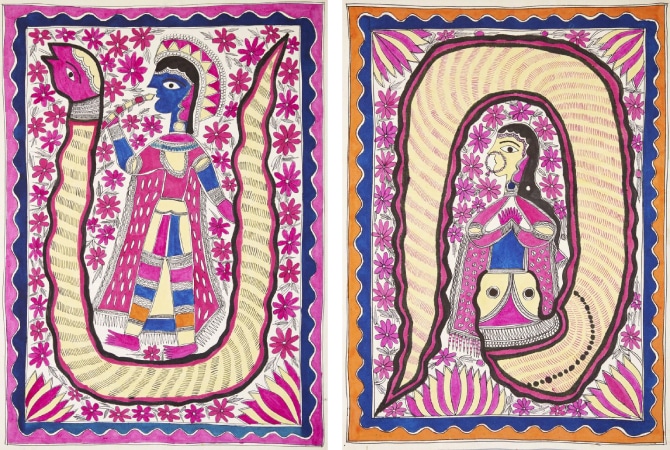
Madhubani paintings are among the most well-known in India. This style started as a kind of wall painting in the Mithila area of Bihar, but it wasn’t generally recognized in the Western world until British government servant and art historian W.G. Archer discovered it in 1934 while surveying damage from an earthquake on the border between Nepal and India.
The Madhubani style is distinguished by a straightforward and vivid depiction of tradition and culture, generally representing mythical subjects.
In this style, artists combine colourful images with simple patterns, which frequently feature flower, animal, or bird designs. The art form is practiced in a variety of genres such as Katchni, Bharni, Tantric, and Godna.
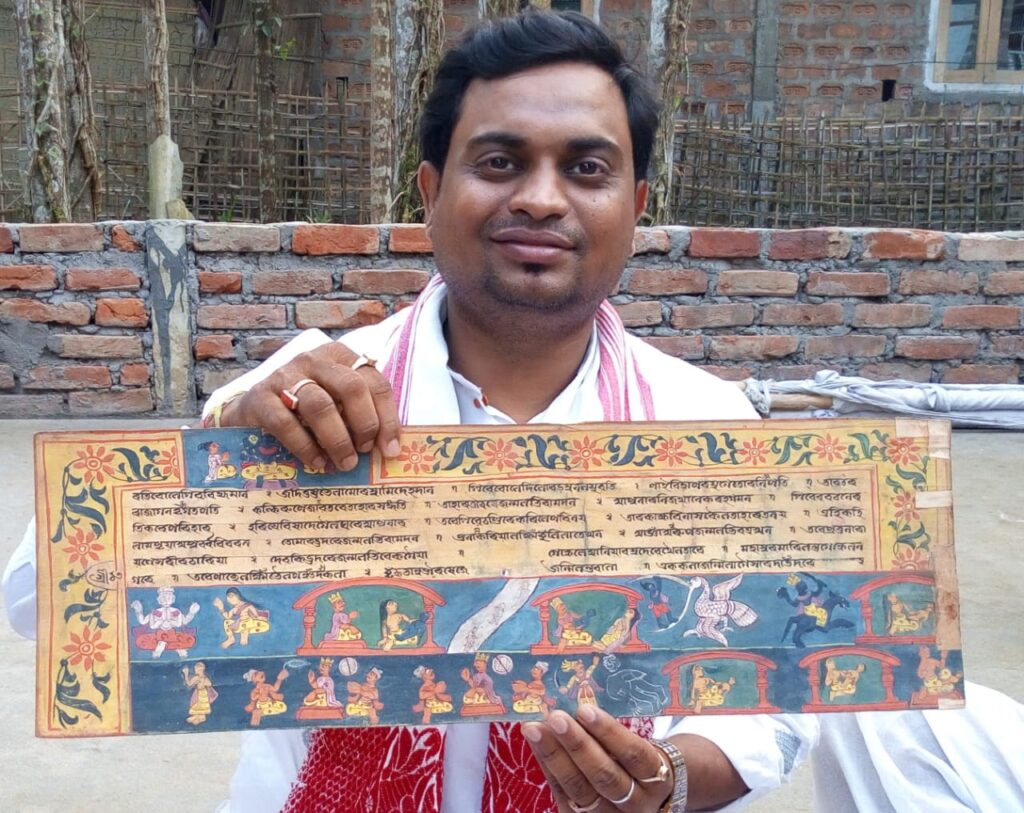
First found on palm leaves, created for merchants who transported them throughout the country in the 10th and 12th centuries, these little works were mainly crafted as images for manuscripts. Throughout the Mughal and Rajput courts, the art form grew in importance.
Miniature paintings were elaborate and detailed, relying on Persian methods. The themes varied from historical and religious situations to ordinary ones in Indian Art.
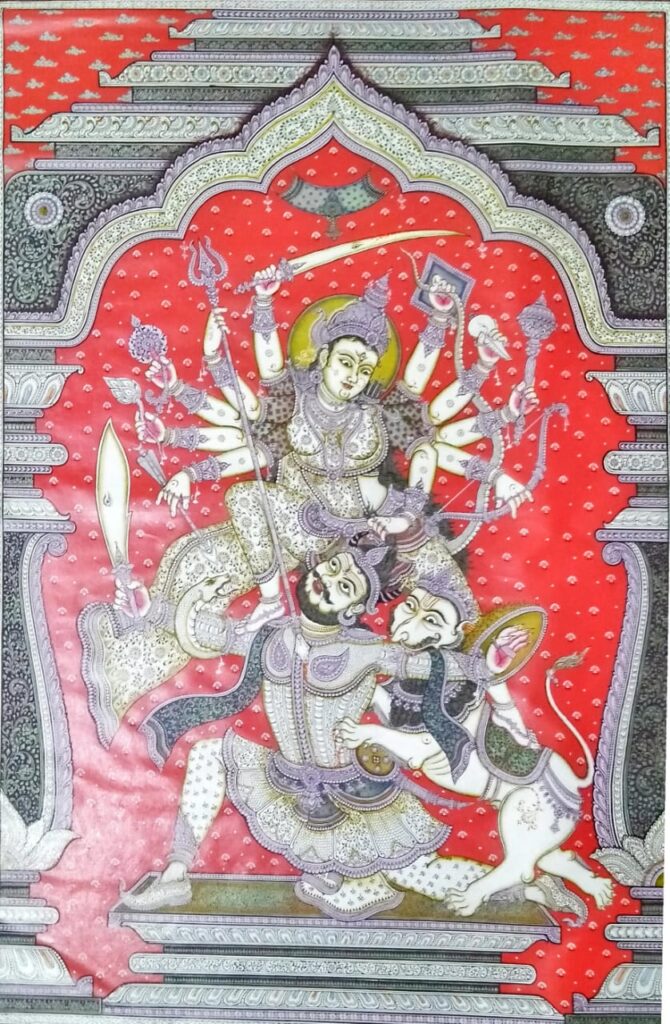
This style, which goes back to the 12th century BC in Orissa, is another early type of painting. This kind of painting is still produced in the area’s tiny settlements today.
Pattachitra or Patachitra is a general term for traditional cloth based scroll painting based in the eastern Indian states of Odisha and West Bengal. Patachitra art form is known for its intricate details as well as mythological narratives and folktales inscribed in it. Patachitra is one of the ancient artworks of Odisha, originally created for ritual use and as souvenirs for pilgrims to Puri as well as other temples in Odisha.
The Indian Folk Arts and Indian Crafts, known for their detailed intricacies and legendary themes, use angular, aggressive lines and are heavily influenced by Mughal-era.
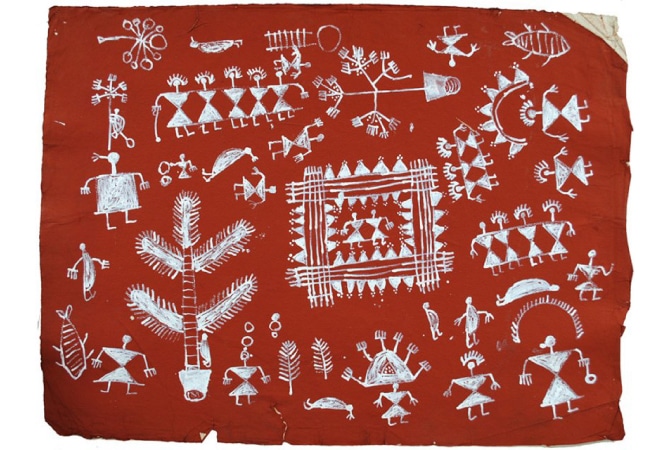
Warli – Indian folk Art, a kind of traditional Indian artwork, have been around for 2,500 years. The style developed in Maharashtra, a state in western-Central India, and is still commonly performed today. Warli paintings, which are often painted on the walls of huts, use linear and monochrome colors and a basic manner of execution that mimics cave painting.
In contrast to other styles of tribal art, which use a plethora of colors, this style uses earth tones and neutral shades to show the everyday routines of indigenous people like hunting, farming, and dancing.
Warli painting from Maharashtra is one of the oldest styles of Indian folk art that’s managed to persist for thousands of years. Warli paintings are mainly created by Tribal people from North Sahyabadri Range in India.
The Warli tribe is one of the largest in India, located outside of Mumbai. Despite being close to one of the largest cities in India, The Warli culture is centered on the concept of Mother Nature and elements of nature are often focal points depicted in Warli painting.
Many Warli paintings depict the Tarpa dance as a central component. The Tarpa is a kind of trumpet-like instrument that different men take turns playing. The dancers pair up, intertwining their hands and circling the tarpa player. They then follow him in a turning and pressing manner; he can’t turn his back to them because they will always be around him.
Warli art often depicts triangles which are different sizes depending on their gender. A triangle is usually larger or wider at the top if it represents a man, and wider towards the bottom if it represents a woman.
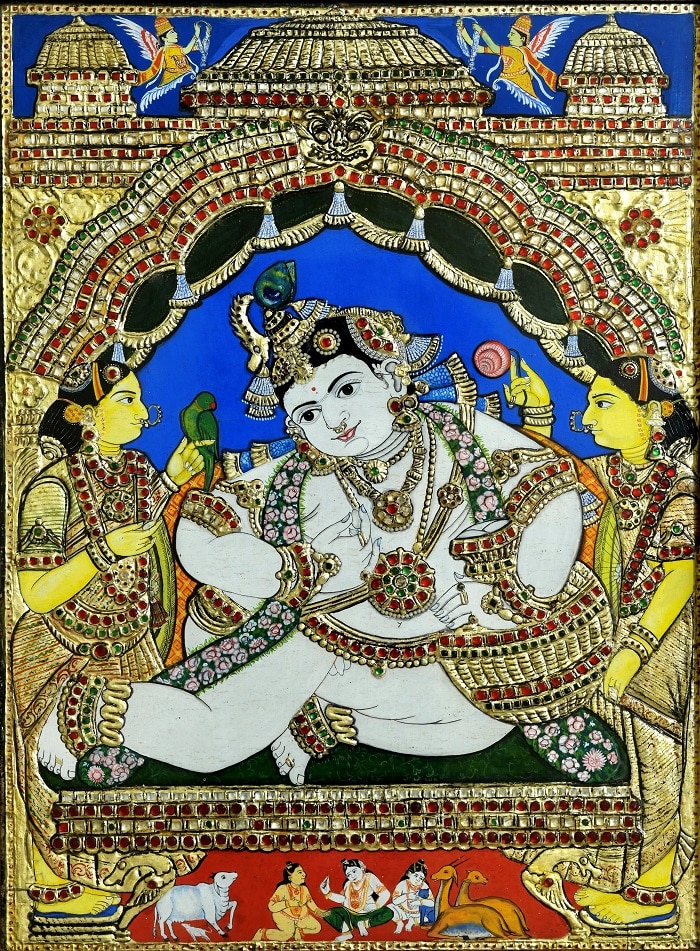
Thanjavur Painting is an ancient traditional Indian folk art form and their common theme is mythology. They demonstrate that spirituality is a necessary component of a creative work.
Tanjore Painting is a classical South Indian art developed in the late 16th century in Thanjavur, also known as Tanjore in Tamil Nadu, a south Indian state.
The art of Tanjore originated in the city of Thanjavur, which was originally the capital city of the Chola Empire. It has taken on its own look, enriched with intricate architectural designs and bright colors after being influenced by the murals from imperial era.
The unique style of Thanjavur or Tanjore painting as known today, is known to have flourished in the Maratha court of Thanjavur between the 17th and 19th centuries.
The Maratha people of India, who had been practicing painting for centuries, found new ways to depict the human body and naturalistic landscapes under the guidance of King Serfoji II. King played a particularly significant role in developing this artform.
These Tanjore Paintings offer a taste of the serenity and permanence associated with Puranic scenes. With their lifelike illustrations, this collection is characterised by its alluring design.
The Mughal era saw many changes in the style of artwork. The Marathas ruled over Thanjavur for nearly two centuries, and brought a distinctive style change to Thanjavur paintings.
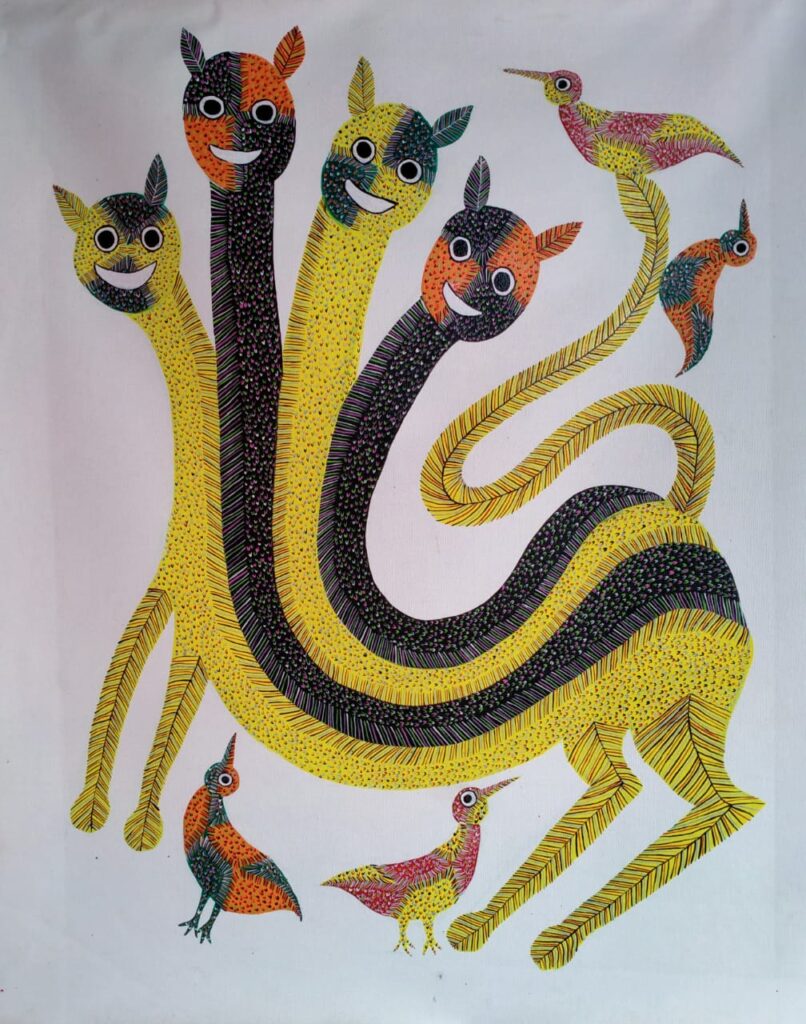
Gond painting has been practiced by the Gond tribe of Madhya Pradesh, India. Generally painted with dots and dashes or short lines, their illustrations feature complex patterns.
A type of Mural painting, done beautifully on the walls and floors as part of festival celebrations. Primarily using natural pigments for colors from vegetables, flowers, cow dung or mud etc
Gondi culture is the main background for the designs and patterns selected. Gondi is an Indian tribe that lives in the regions of Madhya Pradesh, Assam, and Andhra Pradesh. The unique feature of Gond painting is the fusion of living creatures with nature, they all seem connected.
The history of Gond painting is not complete without mentioning young Gond Tribal Artist Jangrah Singh Shyam, who transformed these mural paintings to canvas and paper in 1981 and tragically passed away in Japan under mysterious circumstances at the age of 39, promoting Gond Art in Japan.
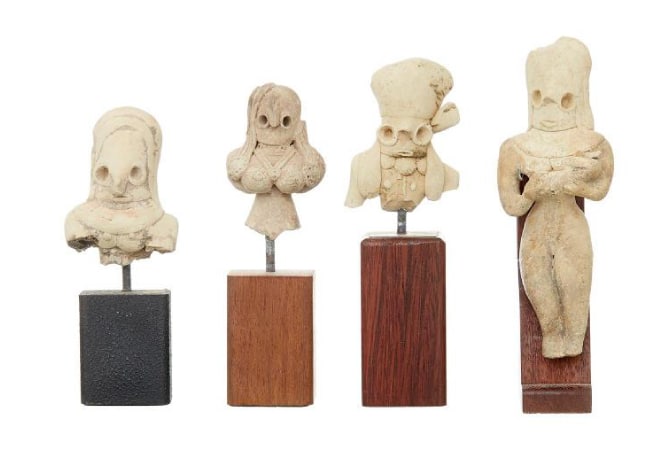
Indian sculpture is still a popular form of creative expression, particularly as a kind of religious art. Buildings were lavishly decorated, and the subject matter was mostly abstracted human shapes meant to express Buddhist, Hindu, and Jain concepts. In Indian sculpture, female goddesses such as Kali, Shakti, and Brahma were frequently represented.
Indian sculptures date back to the Indus Valley when terracotta figures were among the earliest to be manufactured.
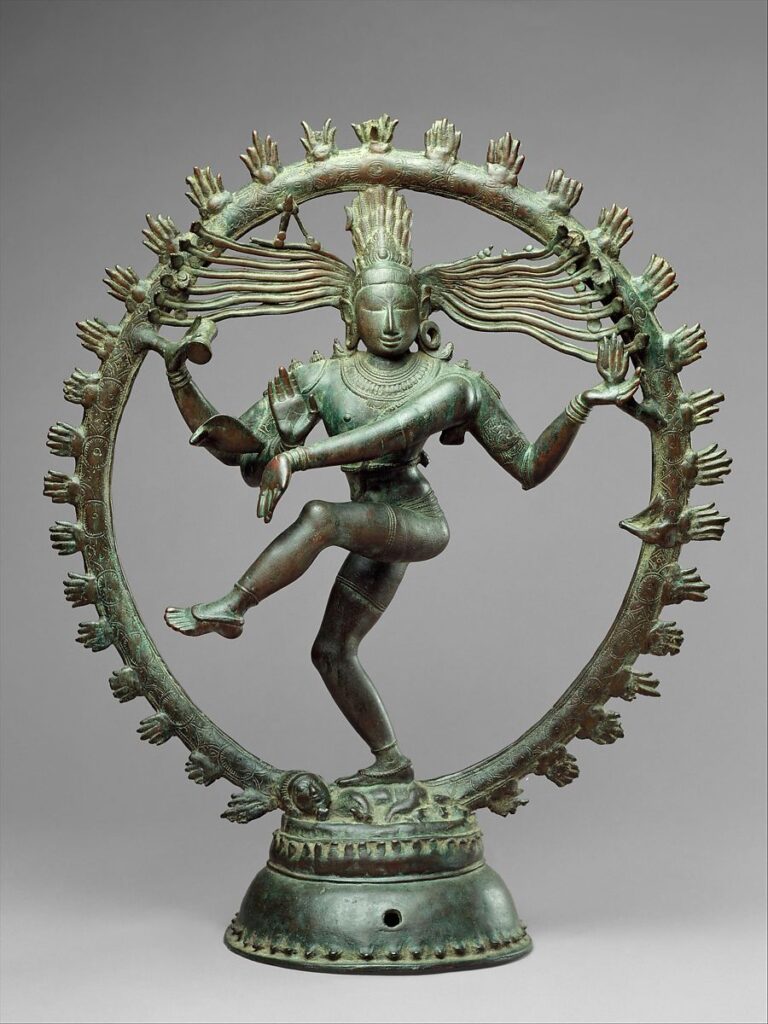
Chola bronze of Shiva as Nataraja (“Lord of Dance”), Tamil Nadu, (10th or 11th century).
Large stone pillars emerged at crossroads and key places during the Mauryan Dynasty, which lasted from the 4th to the 2nd centuries BC. They frequently had lotus-shaped tops and lion motifs, which were imperial insignia.
During this time, several massive stone images of deities were created, followed by smaller copies that were put on Buddhist monuments. Stupas were encircled by ornately carved gates adorned with a variety of religious emblems leaning towards Indian Crafts.
In the second and first centuries BC, more developed Indian figurative sculptures started to appear. Over the decades that followed, a diverse range of styles and customs developed in various places.

The Elephanta Caves form a significant role in the art and culture of India, a series of cave temples mostly devoted to the Hindu deity Shiva and built during the mid-5th and 6th century AD, is one of the most notable buildings. By the 9th and 10th centuries, Indian sculpture had evolved into a form that differed little from what it is now and was mostly utilized as building adornment.
In the early years of the 20th century, sculpture in India followed western academic art practices, and styles were significantly influenced by realism artists working on secular subjects in British art colleges. The old and customary forms displaying tales and deities were significantly altered. Ramkinkar Bai, worked in the 1940s and 1950s to combine Western art with traditional Indian art, exploring unusual materials such as gravel, concrete, and cement.
This innovation continues in modern Indian sculpture, which draws on traditional methods and subject matter while experimenting with new approaches.
Now that we have taken a look at the history of art from India, as well as the various Indian art styles, we can move on to look at some of the most well-known sculptures and paintings by Indian artists. We will start with an introduction to each artist and then explore their Indian paintings and other artworks.
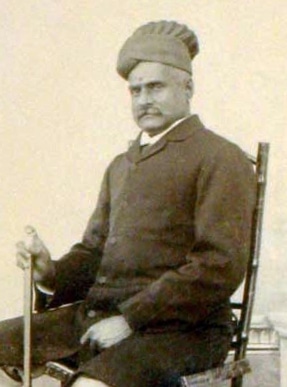
Raja Ravi Varma (1848 – 1906)
Nationality: Indian
Date of Birth: 29 April 1848
Date of Death: 2 October 1906
Place of Birth: Kilimanoor, Travancore
Ravi Varma, who was born in the Kerala town of Kilimanoor in 1848, was of royal descent. According to legend, his uncle discovered him sketching images on the walls of his residence forming unique wall art! The uncle took him to the royal palace in Thiruvananthapuram, where he was taught in painting.
He was exposed to numerous Western and Indian styles of the time at the palace. Oil as a medium was only being introduced, and there were few who were familiar with the technique.
Ravi Varma learned the medium by seeing Theodor Janson, a Dutch artist who was visiting the palace. He rose to fame as Raja Ravi Varma, revered as the founder of contemporary Indian painting for two main reasons. He was the first to combine European academic methodologies with Indian tastes.
Ravi Varma emphasized realism in his paintings, focusing on details, the play of light and shadows, and giving depth by employing perspective. The folds of a saree fluttered, the hair curled, and the eyes glowed with need. He made prominent place for Contemporary Indian Art.
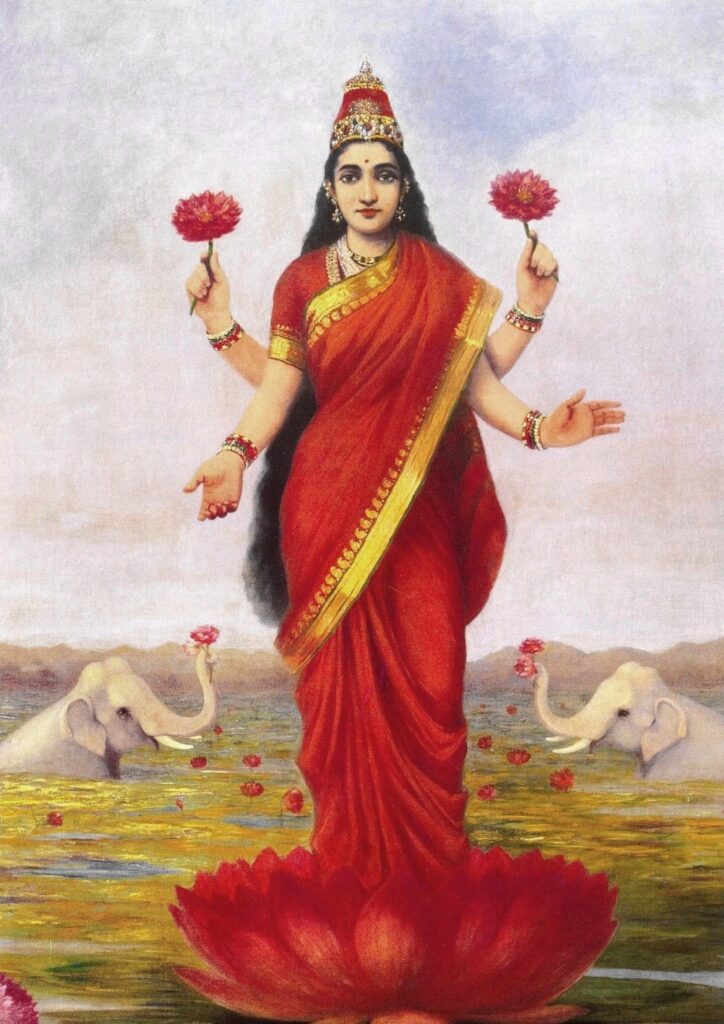
The gems that lavishly ornamented his figures glistened in a perceived slant of light with heavier strokes. His paintings are brimming with life, with trees laden with fruits and flowers, waterways glistening with their various colors, and individuals seemingly ready to blink their eyes and resume their activity. This was a significant departure from the sort of artwork that was created at the time.
Ravi Varma’s extensive collection of work reflects his journeys across the country’s ever-changing geography. Few people travelled at that age, but his search was aided by the country’s railways, which were being built at the time.
His brother Raja Raja Varma, a superb artist in his own right, was often by his side, assisting Ravi Varma in his painting and managing his enterprises. Ravi Varma was cognizant of his customers – the princes and dewans he painted – an ambitious blend that made him among the most sought-after painters, according to Rupika Chawla. Raja Ravi Varma, widely regarded as the creator of Indian calendar painting, brilliantly brought Hindu legendary characters to life.
Until then, most of the painted figures were flat, and the gods were only recognizable by their personal accoutrements. His painting output was crucial in the formation of national consciousness.
It was also during a period in Indian history when national sensitivities were developing. His Veda-reflective work caught on quickly, earning popularity while also nourishing the conscience.
This might be one of the reasons why his equally accomplished brother, landscape artist Raja Raja Varma, did not receive the same acclaim as his brother.
For decades following his death, his works adorned the walls of middle-class houses; nevertheless, new schools of painting eventually emerged. The Bengal School of Art responded angrily to Raja Ravi Varma’s European academic artistic approach.
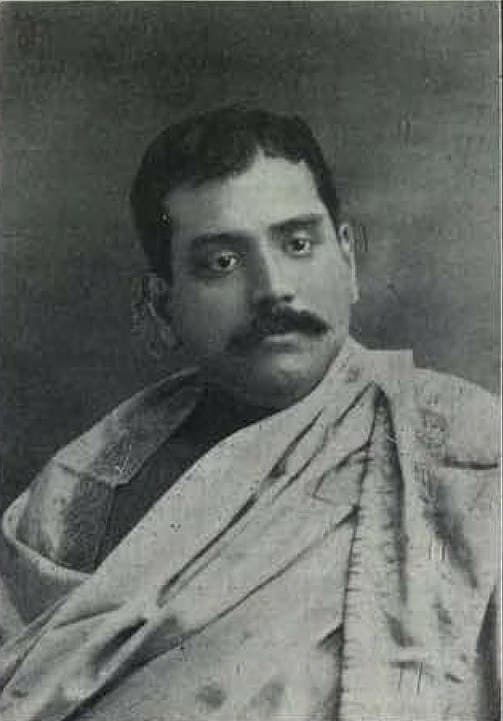
Abanindranath Tagore: (1871 – 1951)
Nationality: Indian
Date of Birth: 7 August 1871
Date of Death: 5 December 1951
Place of Birth: Jorasanko, Calcutta
Abanindranath Tagore was born in the Bengal town of Jorasanko and was exposed to art from a young age. He was one of the most important artists, our nation was blessed with, as the Tagore family has a history of culture and literature.
As a proponent of Swadeshi principles, he founded the Bengal School of Art. His history is sufficient to inform you about his extraordinary work, which paved the way for the creation of contemporary Indian art.
This concept, however, did not emerge overnight. He grew conscious of the English domination over the art scene in India when he enrolled in the Calcutta School of Art in 1890.
He was profoundly disturbed by it since he was a big believer in ancient Indian ways. As a real artist, he founded the ‘Indian Society of Oriental Art’ with his brother Gaganendranath Tagore. He combined Indian style into his paintings, resulting in a fundamental transformation in the teachings. He didn’t even hesitate to condemn Western “materialistic” art.
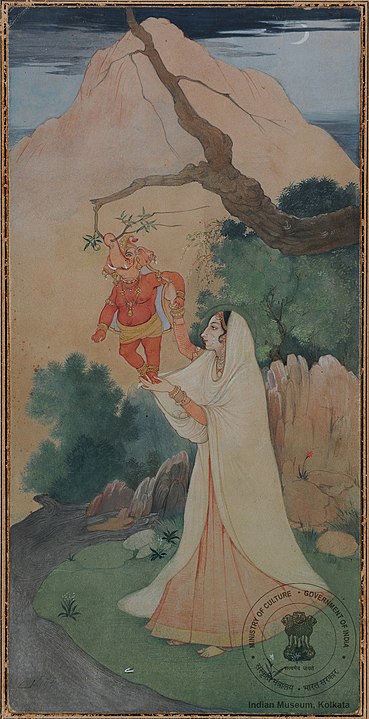
Truly a versatile individual, several of his works reflected India and earned widespread acclaim. When his work was finally acknowledged and marketed as a national Indian style inside British art organizations under the moniker Indian Society of Oriental Art, he made history.
Nevertheless, one of his most notable works was the Arabian Nights series, which he completed in 1930. He employed the Arabian Nights tales as a metaphor in these works to depict colonial Calcutta’s emerging cosmopolitanism.
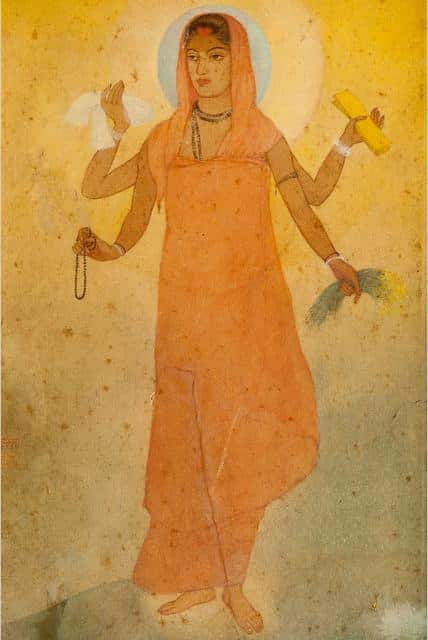
The painting was created during the Swadeshi movement. The movement emerged as a reaction to Lord Curzon’s Partition of Bengal (1905), which divided Bengal’s mostly Muslim eastern portions from its largely Hindu western areas. Indian nationalists involved in the Swadeshi movement responded by rejecting British products and organizations, organizing rallies and parades, creating committees, and exerting political pressure.
The centre person in the artwork carries a book, sheaves of rice, a strip of white fabric, and a wreath, all of which are connected with Indian tradition and the economics of India in the early 20th century.
Furthermore, the primary figure in the artwork has four hands, evoking Hindu iconography that associates many hands with enormous strength. The picture is historically significant since it is one of the first depictions of Mother India. Many variations of the Bharat Mata have been created in paintings and other kinds of art since 1905.
The value of Tagore’s original artwork, nevertheless, is still acknowledged. From start to finish, the image is a plea to the Indian heart in the Indian language. It is the first outstanding work in a new style.
If it were possible, it would be mass-produced in the thousands and spread across the region until there wasn’t a farmer’s hut or a craftsman’s cottage between Cape Comorin and Kedar Nath that didn’t have this Bharat-Mata exposition on one of its walls as astonishing wall art. As one examines its attributes, one is struck time and again by the clarity and subtlety of the represented personality in the art and culture of India.
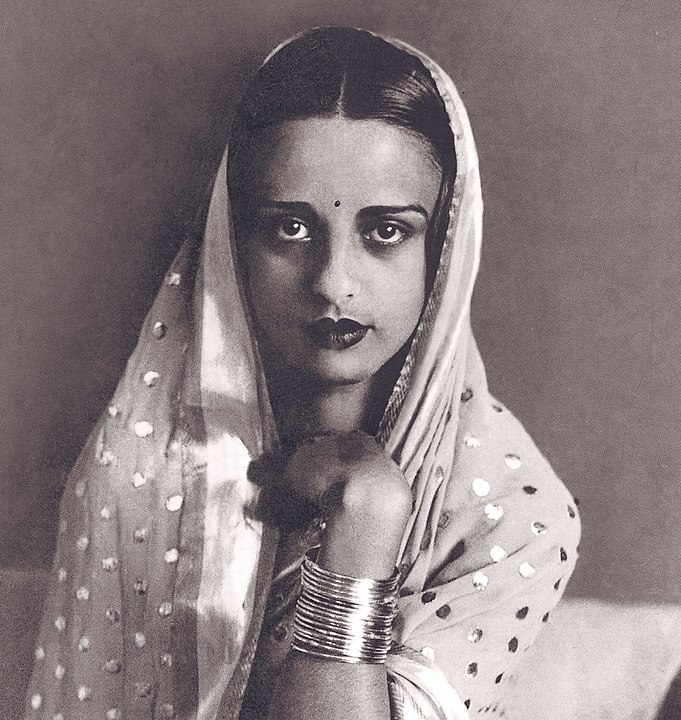
Amrita Sher-Gil: (1913 – 1941)
Nationality: Indian-Hungarian
Date of Birth: 30 January 1913
Date of Death: 5 December 1941
Place of Birth: Budapest, Hungary
Amrita Sher-Gil, a contemporary Indian art trailblazer, utilized her paintbrush to reflect the daily life of Indian women in the 1930s, frequently expressing a sense of loneliness and desolation.
She painted individuals while traveling to the marketplace, at home, and a wedding. She occasionally portrayed women connecting with other women.
The pieces appeared to convey a feeling of calm resolution at moments. It was a unique representation of women from India in an era when images tended to portray them as cheerful and docile.
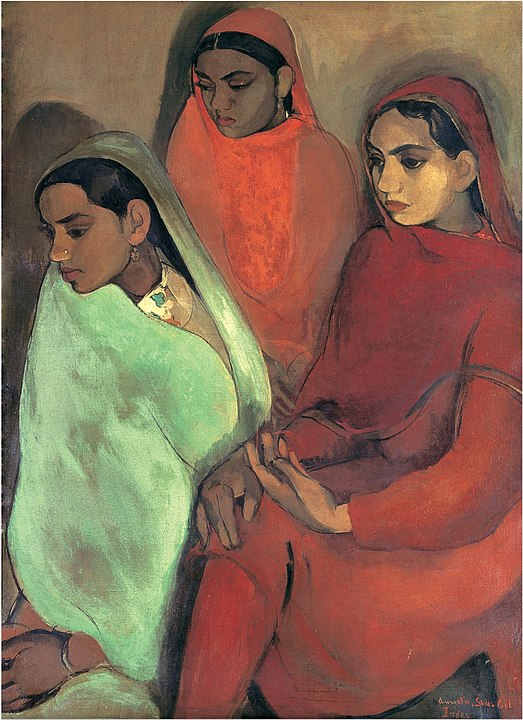
For example, the melancholy picture Three Girls depicts ladies with passive looks, their gloomy brown features contrasting with the brilliant reds, greens, and amber of their clothes.
The tone is dismal as if they are waiting on someone or something they suspect will never arrive. Sher-Gil became recognized as the “Indian Frida Kahlo” because of her style and attention to women.
Her subjects’ loneliness was easily understood because their feelings mirrored her own. She lived between worlds as a result of her upbringing, frequently yearning for a feeling of belonging.
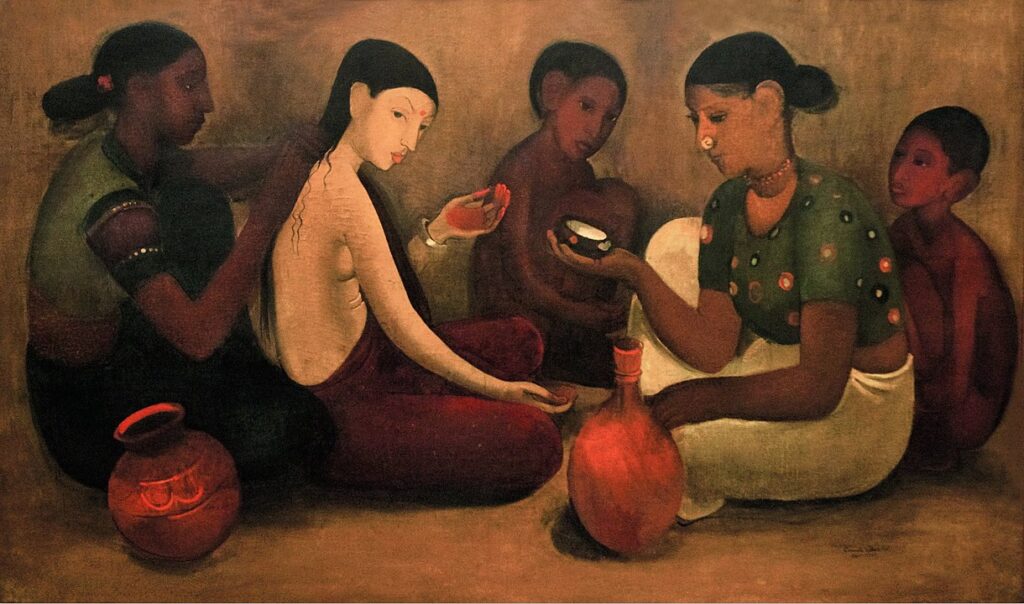
She had a close relationship with the painter Marie Louise Chassany, and several art experts, including her nephew, thought her painting Two Women portrayed their desire for one another.
Sher-Gil traveled extensively during her life, visiting Turkey, France, and India, drawing substantially from pre-colonial Indian art forms and modern Indian culture. She is considered a notable 20th-century Indian artist, with a legacy comparable to the Bengal Renaissance innovators.
She was also a talented musician and an avid reader. Despite the fact that she was poorly recognized when she was living, her works are among the most expensive among Indian women artists currently.
Amrita is reported to have had a life as intriguing and unconventional as her work. Her narrative is intriguing — her father, a photographer, documented her early years for posterity — and provided insights into both Amrita and Indian and European high society in the 1920s.
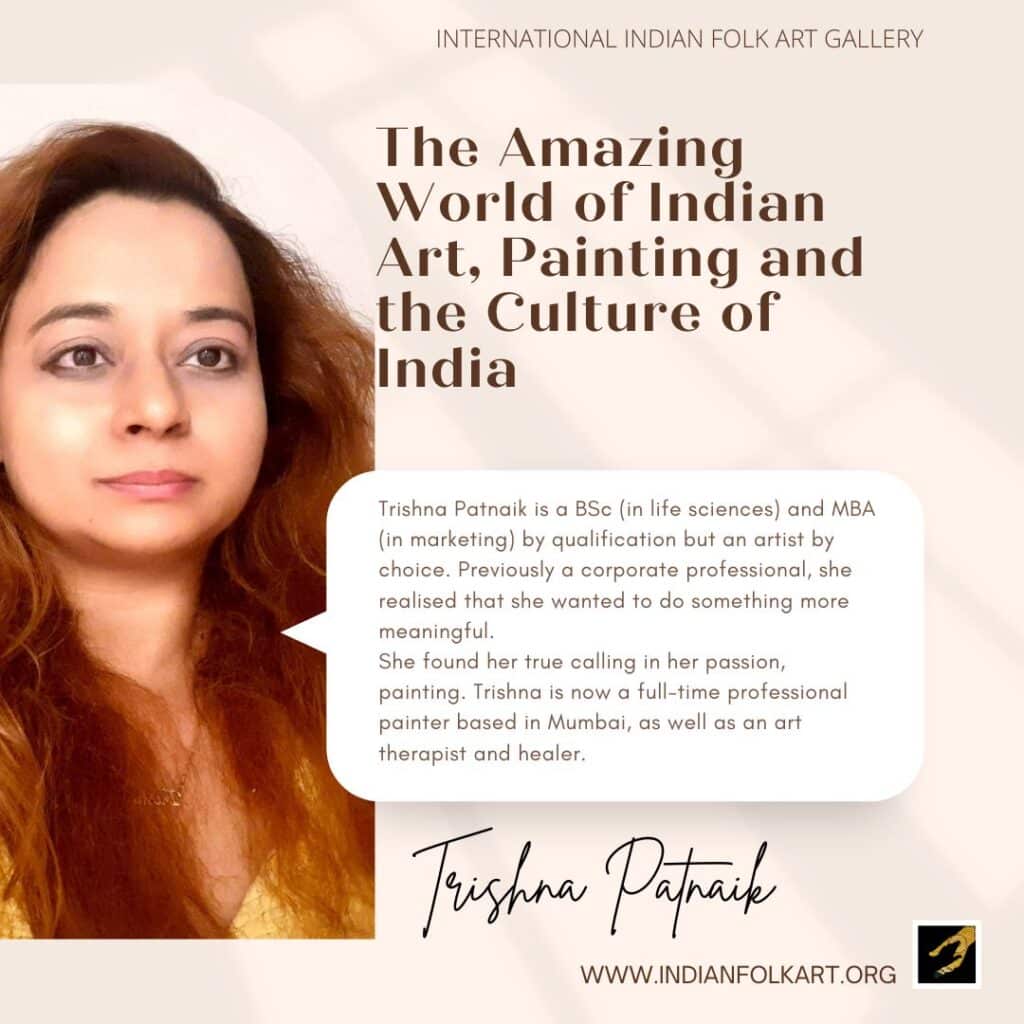
In a nutshell, Indian traditional art comprises a versatile and aesthetically entrancing collection of Indian paintings that will make you fall with them eventually.
The charisma of bold splashy colours, the spectacle that these artworks spread in the heart & mind of the observers, and the unforgettable impression of these superiorly crafted work of human genius make these pieces a must-have for the art zealots like you.
So, if you haven’t yet approached any online art gallery that is offering Indian paintings, do it now. It’s never too late.
Please do leave your feedback below,
Thank you,
Trishna Patnaik
https://leverageedu.com/blog/history-of-indian-art/
https://www.culturalindia.net/indian-history/ancient-india/ancient-art.html
https://www.metmuseum.org/art/metpublications/India_Art_and_Culture_1300_1900
https://indianculture.gov.in/ebooks/concise-history-indian-art
https://www.britannica.com/art/South-Asian-arts/Mughal-style-Akbar-period-1556-1605
https://www.tota.world/article/1200
https://www.indianetzone.com/57/history_indian_paintings.htm
https://www.ivsindia.com/blog/indian-art-history/
https://www.dhoomimalgallery.com/post.php?id=145
https://www.nios.ac.in/media/documents/sec225new/Lesson-1.pdf
https://aaa.org.hk/en/collections/search/library/towards-a-new-art-history-studies-in-indian-art
https://www.baytalfann.com/post/indian-islamic-art-sharad-mohan
https://www.astaguru.com/blogdetailpage/the-evolution-of-modern-indian-art-
https://www.tallengestore.com/collections/indian-art
https://criticalcollective.in/CC_ArchiveInner2.aspx?Aid=287&Eid=276

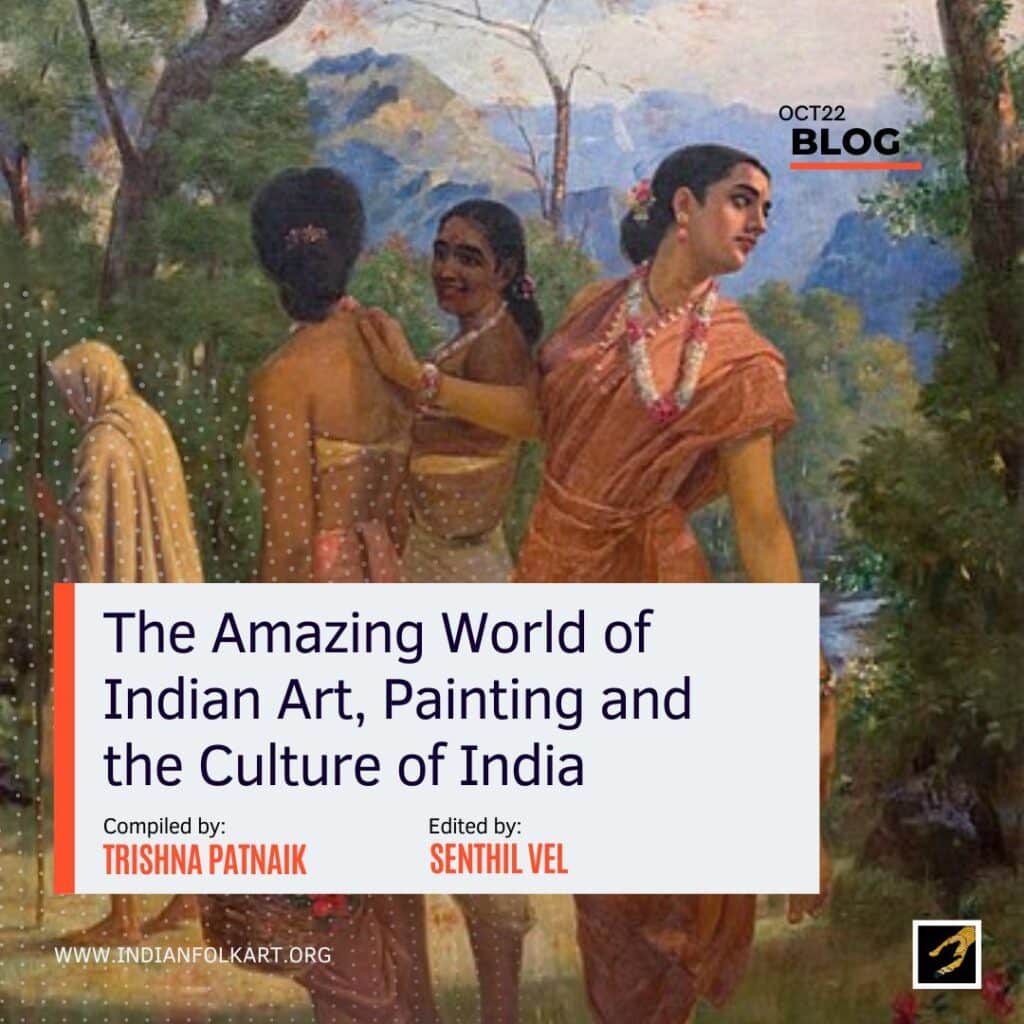
One comment for “The Amazing World of Indian Art, Painting and the Culture of India”
Ancient Indian Art Exhibition: DakshinaChitra Heritage Museum, Chennai – International Indian Folk Art Gallery
[…] India, each style distinct and originating from various states and territories across India. These traditional arts are over 3000 years old and their survival has been solely dependent on artisans and their small […]